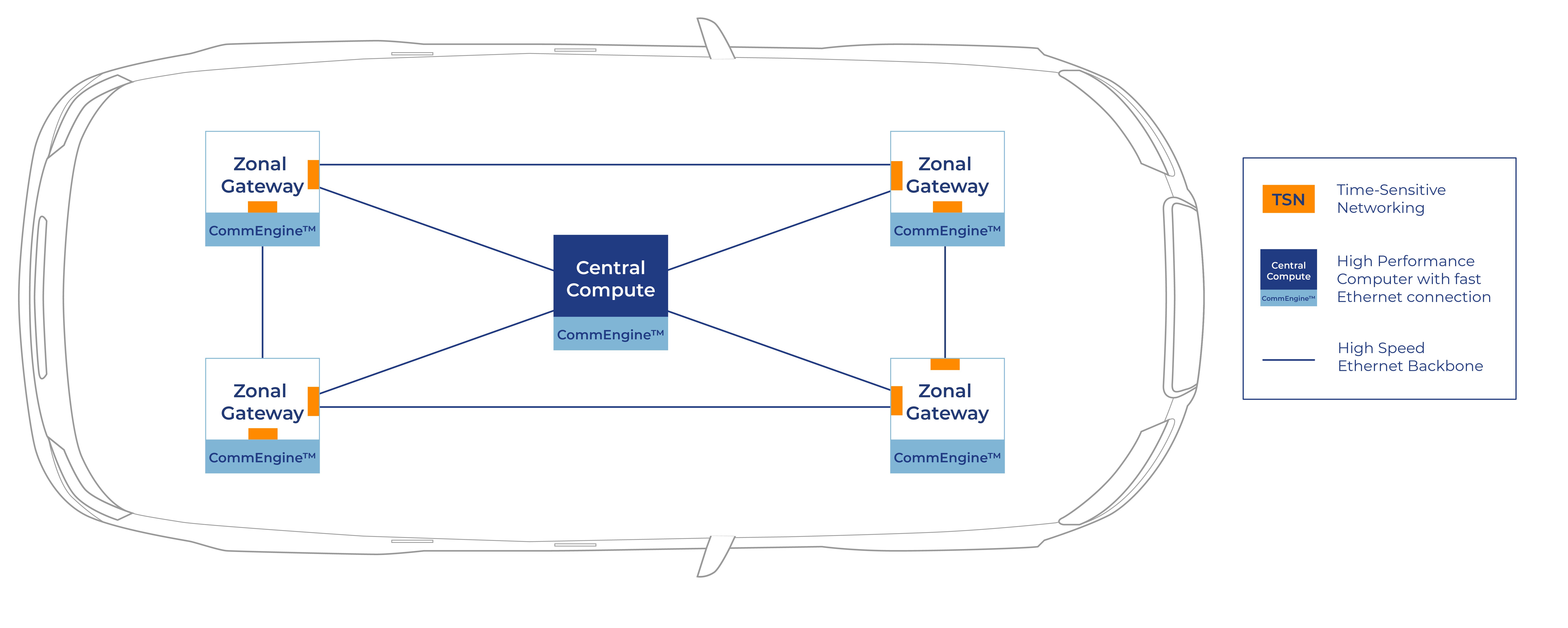As the automotive industry continues to evolve, Ethernet is well on its way to becoming the industry standard when it comes to in-vehicle communications. The initial appeal of Ethernet as a replacement to the traditional CAN bus was due to its high speeds and throughput rates, versatility, security, and affordability.
This switch does not come without challenges, however. Automotive software relies heavily on real-time data to operate safely and effectively, and therefore requires a deterministic solution. Traditional Ethernet, however, is non-deterministic. In response, Time-Sensitive Networking (TSN) was developed and new standards were created.
The addition of TSN has strengthened the case for Ethernet’s role in automotive, allowing for time-sensitive data to be transmitted with low latency, low delay variation and with extremely low loss.
What is TSN and Why Does it Matter?
When cars were being built solely using LIN and CAN protocols, the networks were simpler. Modern cars, particularly software-defined vehicles, require more complex networks better served by Ethernet. But, Ethernet-based networks are more complicated for end-to-end routing and include a number of ‘hops’ as the message travels through ECUs, and it’s important to be able to configure the system with deterministic timing.
That’s where TSN comes in. As an extension to the standard Ethernet protocol, TSN is made up of 4 components:
- Synchronization - ensuring that components all work together to allow for data to be sent and received at the right times.
- Reliability - with no room for error, redundancy features mean that there is always a backup route in place to ensure that data can always get to the right component with zero loss.
- Latency - fast delivery is guaranteed as TSN prioritizes data flow to make sure that the most important data travels at the fastest speeds with bounded latency and low jitter.
- Resources - traffic-scheduling algorithms make sure that all available resources are used in the most efficient way with the most crucial data being processed first using dedicated resources.
TSN acts as an overall coordinator of all the data flowing through the Ethernet system by breaking down the data flows into three categories:
- Time-Sensitive - these are the highest priority data flows that must arrive at their destination within a specific deadline and with ultra-low jitter and packet loss.
- Rate-Constrained - these medium priority data flows required the network to reserve the specified bandwidth.
- Best-Effort - all remaining bandwidth resources are allocated to these lowest priority flows.

TSN Implementation in the Automotive Industry
The implementation of TSN standards in the automotive industry significantly upgrades the traditional Ethernet protocol and provides the following benefits:
- Clear Protocols - the translation of signals to services allows for continuous and transparent native communication from the sensor to the cloud.
- Enhanced Safety - advanced driver assistance systems (ADAS) pose a significant safety risk to drivers if they malfunction. By enabling deterministic networking, TSN ensures that safety-critical data reaches the relevant destination at the precise right time.
- Redundancy - TSN includes communication redundancies and zero packet loss to ensure that critical data can be delivered even if primary network paths become unavailable for any reason.
- Diagnostics - proactive maintenance approach with the right tools, spare parts, and expertise, significantly reduces the duration of downtime or even eliminates it altogether.
- Power Reduction - there is an automotive requirement to enable devices to sleep/wake-up to reduce power usage. TSN can enable this to happen efficiently.
Ethernet & TSN: A Powerful Combination
While traditional Ethernet on its own would not necessarily have been powerful enough to sustain the vehicles of the future, the addition of TSN just may make it unstoppable. GuardKnox’s CommEngineTM is a single-chip solution offering high-performance and cost-effective data routing. CommEngineTM supports high throughput Ethernet routing in addition to supporting all common automotive protocols (i.e. CAN, LIN, etc.). The inherent flexibility of this solution means it works hand-in-hand with TSN solutions to provide the ultra-low latency and high throughput routing necessary to power modern vehicles.
To learn more, click here to set up a demo.






